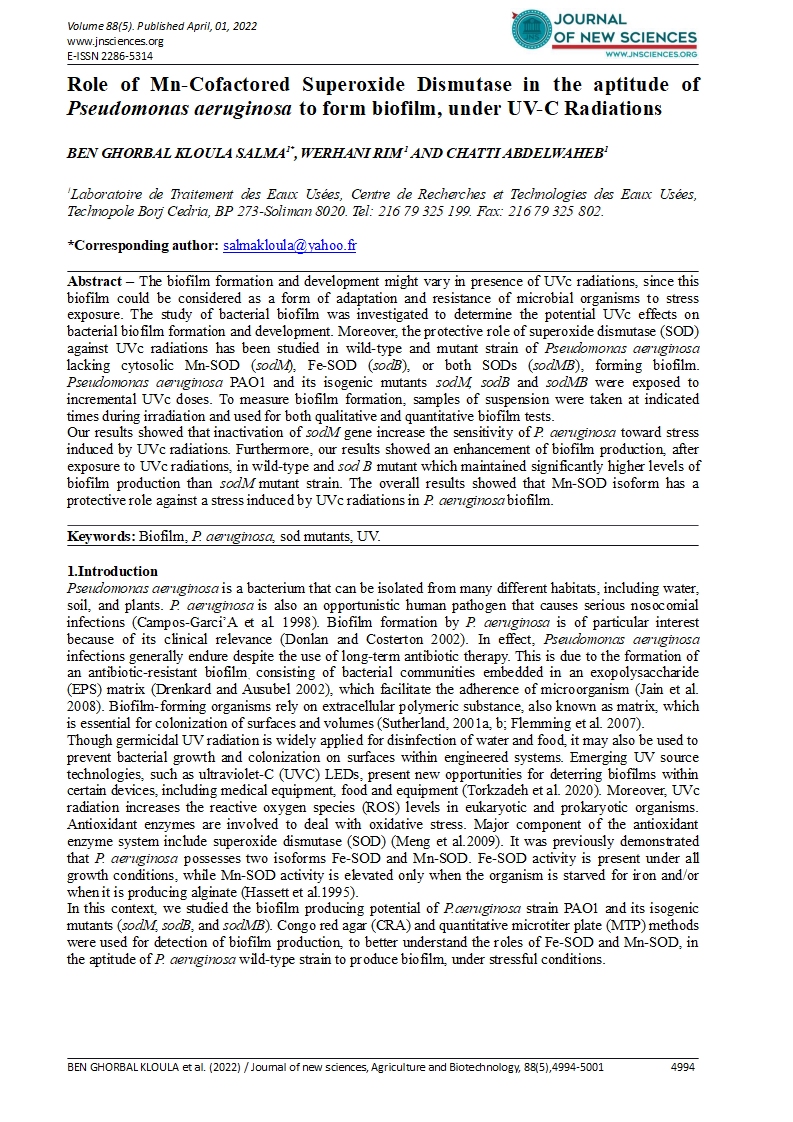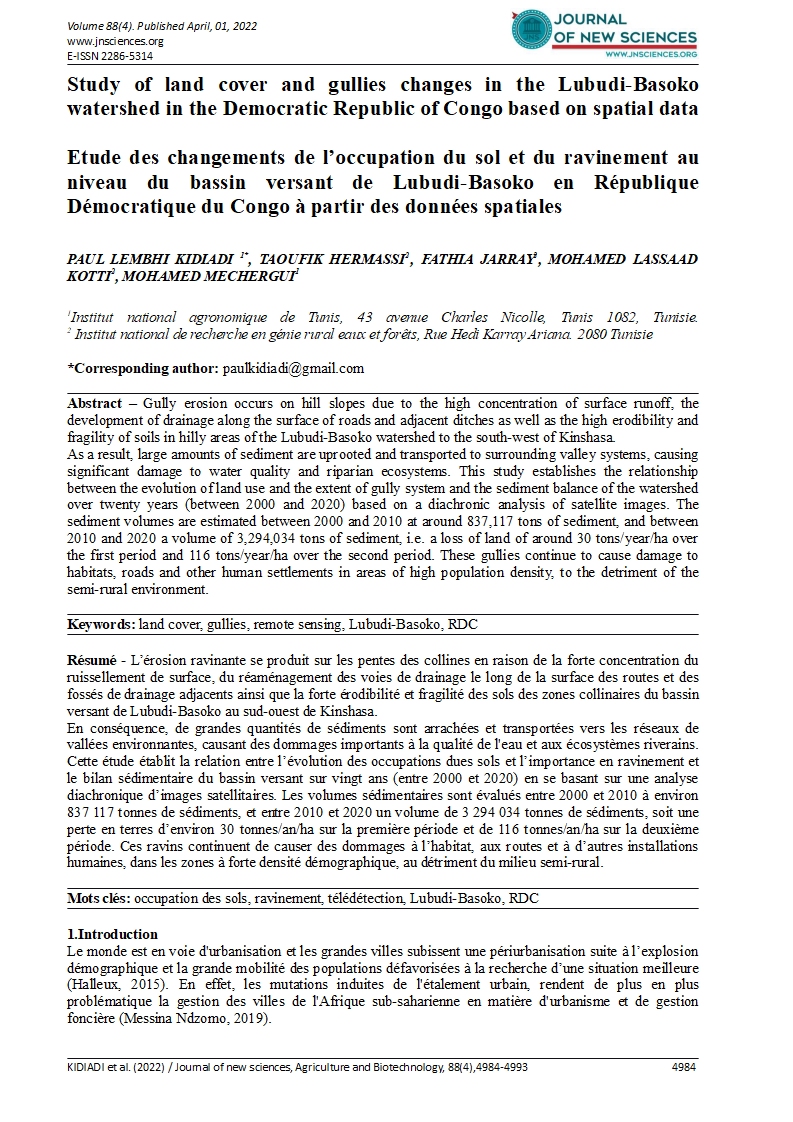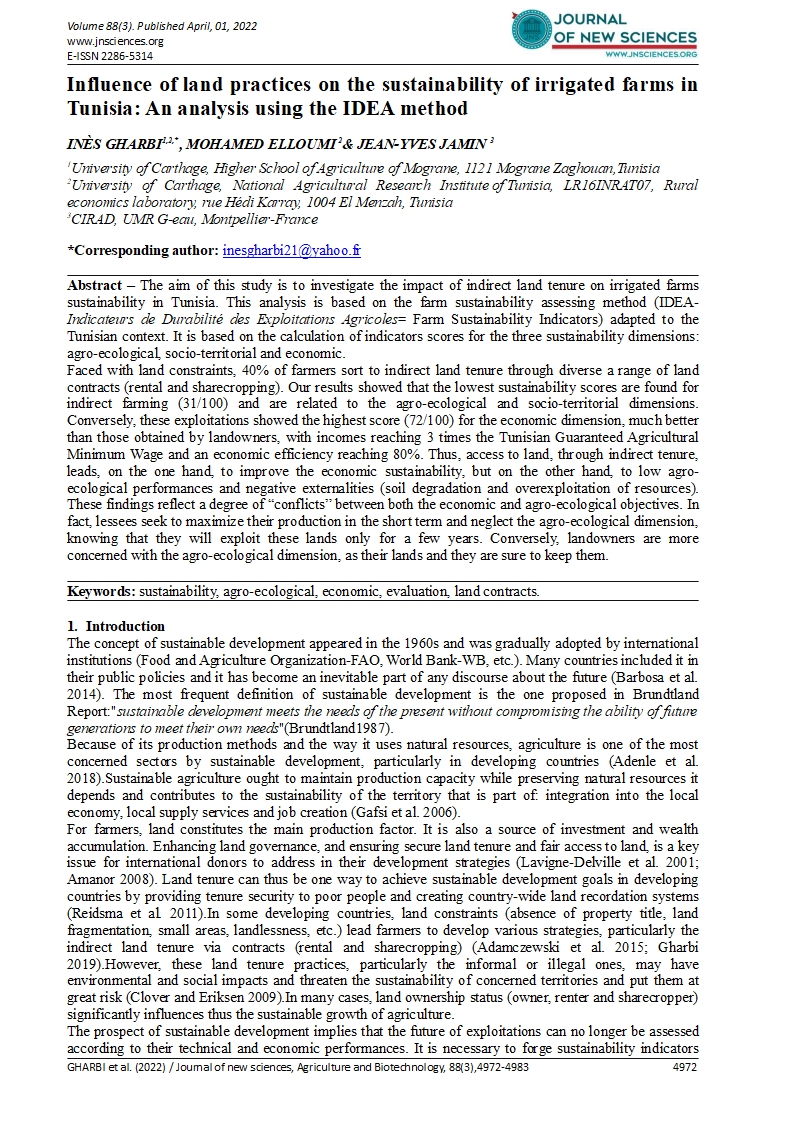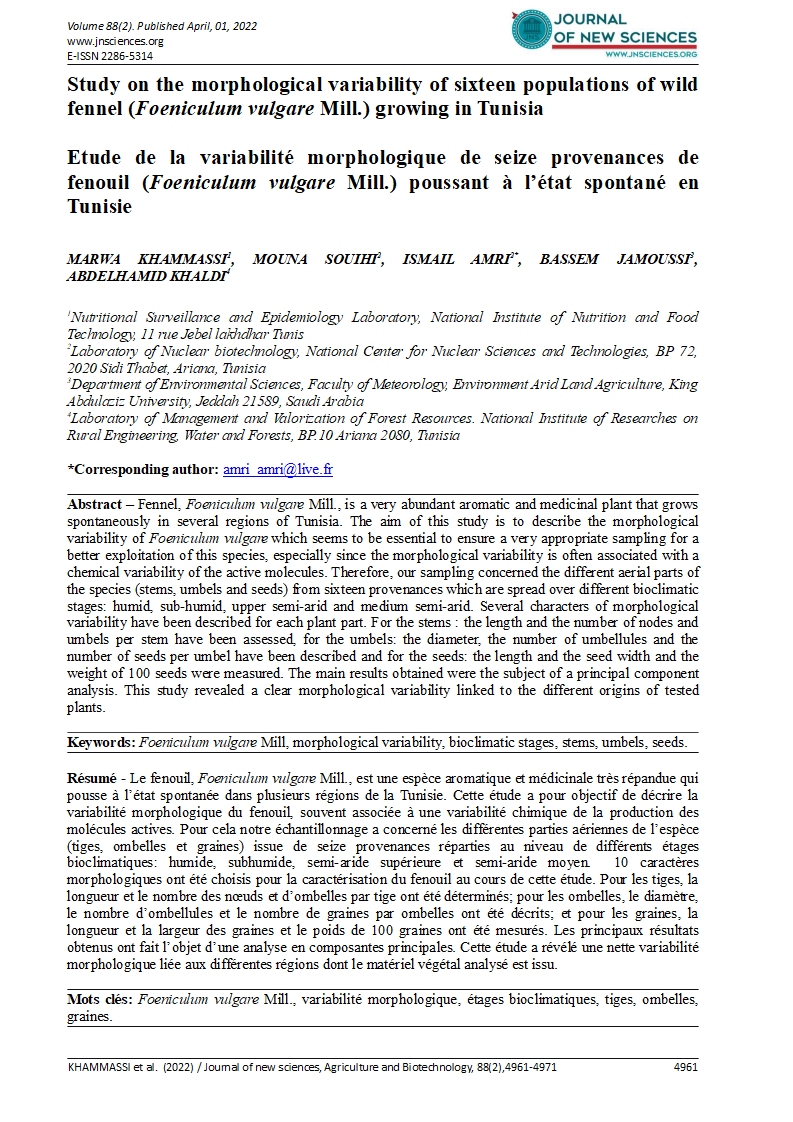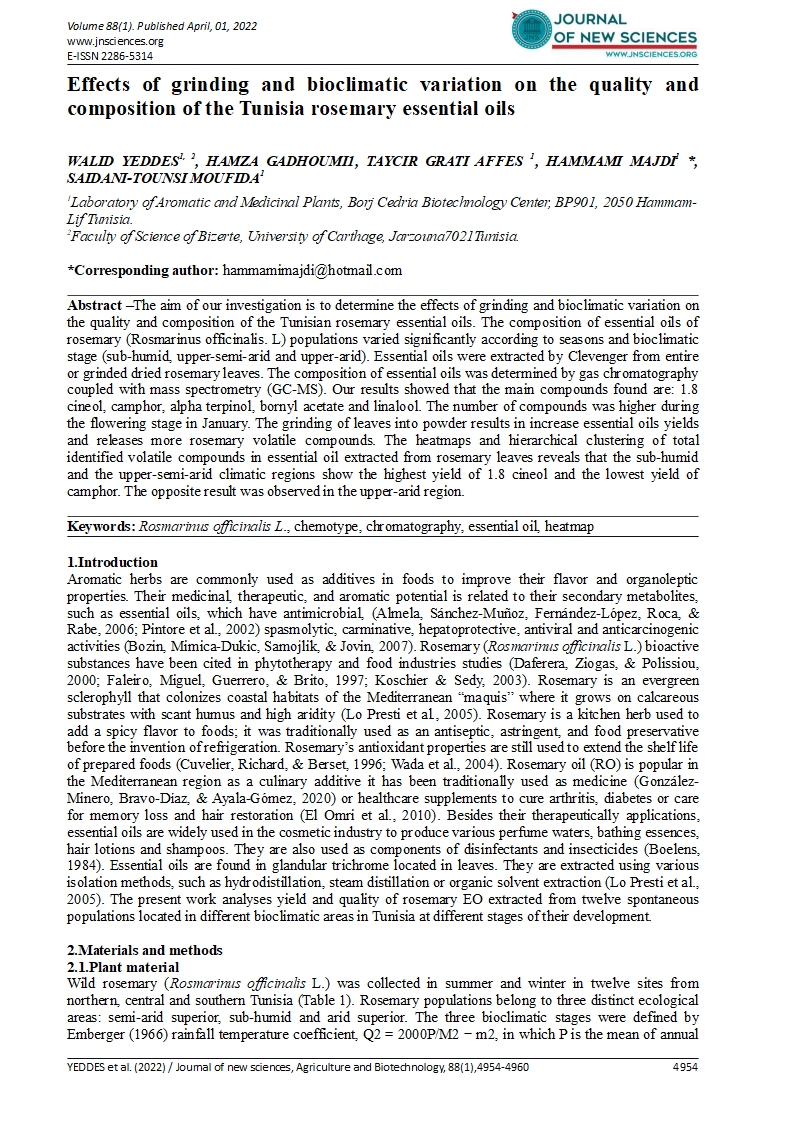- Category: Volume 88
- Hits: 2411
Milk Kefir: Manufacture, Composition And Therapeutic Virtues
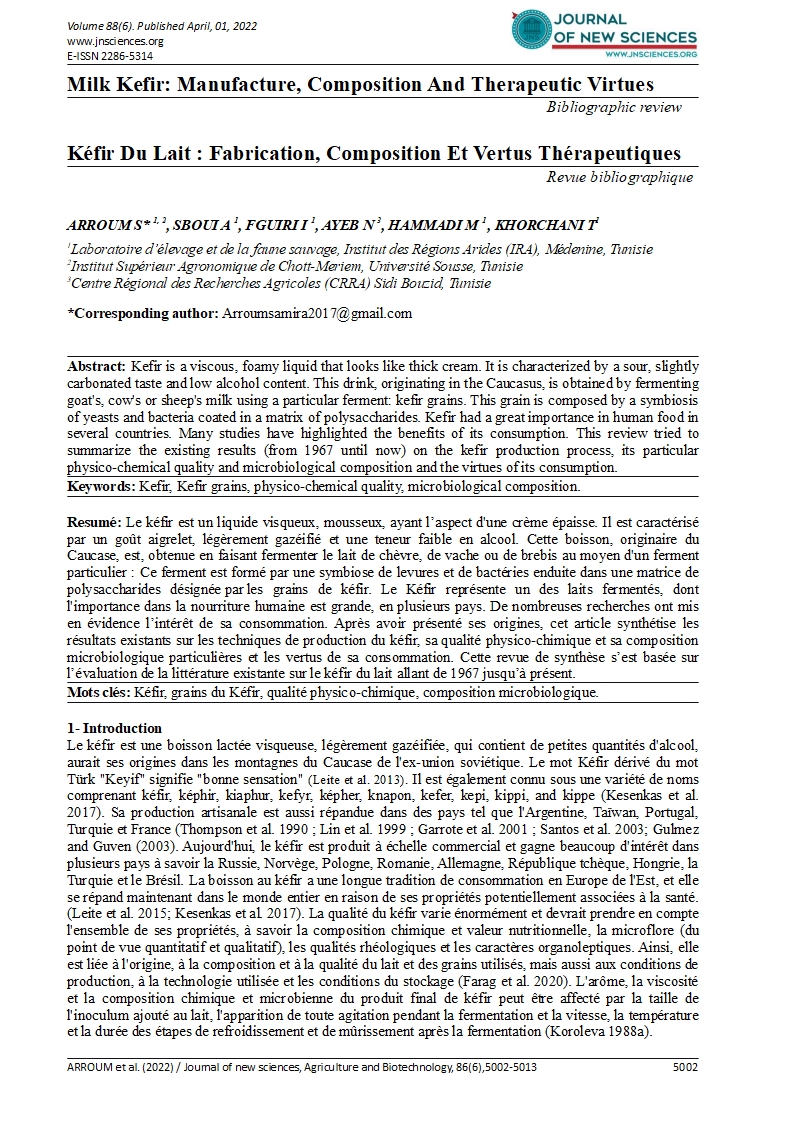
Kéfir Du Lait : Fabrication, Composition Et Vertus Thérapeutiques
Bibliographic Review
ARROUM S1, 2
SBOUI A 1
FGUIRI I 1
AYEB N 3
HAMMADI M 1
KHORCHANI T1
1Laboratoire d’élevage et de la faune sauvage, Institut des Régions Arides (IRA), Médenine, Tunisie
2Institut Supérieur Agronomique de Chott-Meriem, Université Sousse, Tunisie
3Centre Régional des Recherches Agricoles (CRRA) Sidi Bouzid, Tunisie
DOI: https://doi.org/10.55416/sunb.jns01.2204.08806
Abstract: Kefir is a viscous, foamy liquid that looks like thick cream. It is characterized by a sour, slightly carbonated taste and low alcohol content. This drink, originating in the Caucasus, is obtained by fermenting goat's, cow's or sheep's milk using a particular ferment: kefir grains. This grain is composed by a symbiosis of yeasts and bacteria coated in a matrix of polysaccharides. Kefir had a great importance in human food in several countries. Many studies have highlighted the benefits of its consumption. This review tried to summarize the existing results (from 1967 until now) on the kefir production process, its particular physico-chemical quality and microbiological composition and the virtues of its consumption.
Keywords: Kefir, Kefir grains, physico-chemical quality, microbiological composition.

